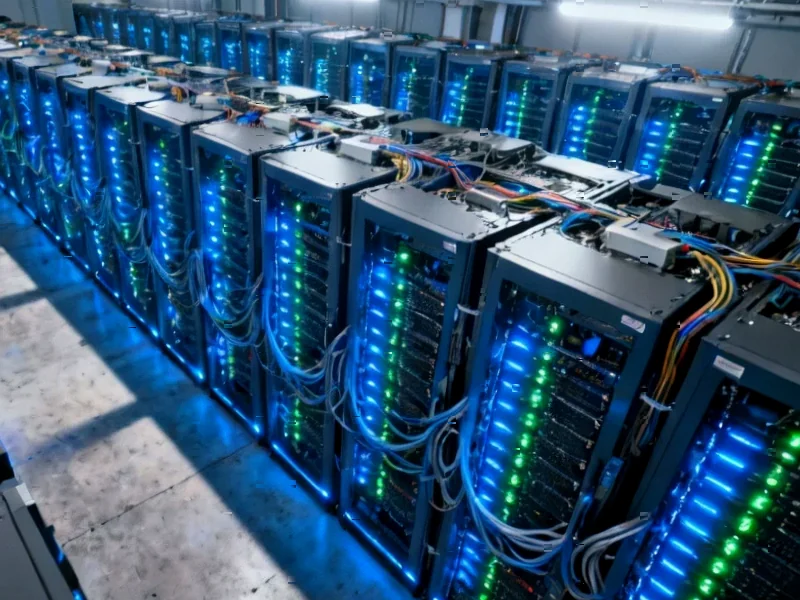According to XDA-Developers, a tech enthusiast discovered that repurposing older GPUs like the GTX 1080 for self-hosted AI applications delivers surprisingly capable performance across multiple use cases. The author successfully deployed 4b parameter models from Ollama for Home Assistant integration, enabling natural language control of smart home devices and creating a full voice assistant system using faster-whisper for speech-to-text. For more intensive research tasks with Open Notebook, the author utilized larger 7b and 12b parameter models, accepting longer processing times in exchange for enhanced privacy and control. The setup also proved valuable for coding assistance in VS Code through Continue.Dev extensions and for enhancing document management in Paperless-ngx and Karakeep through automated tagging and summarization capabilities.
The Emerging Hardware Repurposing Economy
What we’re witnessing is the early stages of a hardware repurposing economy that could fundamentally change how we think about AI accessibility. While companies like NVIDIA push expensive new hardware with specialized AI capabilities, the reality is that millions of older GPUs sitting in closets and secondary systems can handle surprisingly sophisticated AI workloads. This creates a parallel ecosystem where AI capability isn’t gated by the latest hardware purchases but by creative software optimization and model selection. The implications for emerging markets and budget-conscious organizations are profound—suddenly, sophisticated AI tools become accessible without the cloud subscription costs that typically accompany them.
The Inevitable Shift Toward Privacy-First AI Architecture
The movement toward local AI processing represents more than just cost savings—it’s a fundamental architectural shift in how we approach data privacy. As regulations like GDPR and CCPA continue to tighten, sending sensitive data to third-party servers becomes increasingly problematic. Local processing eliminates entire categories of compliance risk while giving users complete control over their data lifecycle. This is particularly crucial for research, legal documents, and proprietary business information where cloud processing introduces unacceptable exposure. The success of tools like Ollama in these scenarios demonstrates that privacy and capability aren’t mutually exclusive—they can be complementary when the architecture is designed correctly.
The Coming Evolution of Developer Tools
The integration of local LLMs into development environments like VS Code signals a broader trend toward personalized AI tooling. While cloud-based services like GitHub Copilot offer convenience, they come with significant limitations around code privacy and customization. Local implementations allow developers to fine-tune models on their specific codebases, creating truly personalized assistance that understands their unique patterns and requirements. As tools like Continue.Dev mature, we’ll likely see an ecosystem emerge where developers can choose from specialized models optimized for different programming languages, frameworks, or even specific architectural patterns—all running locally without exposing proprietary code to external servers.
The Democratization of AI Infrastructure
Perhaps the most significant long-term implication is the democratization of AI infrastructure. For years, AI capability has been concentrated in the hands of large tech companies with massive computing resources. The ability to run capable models on consumer hardware changes this dynamic, enabling individuals, small businesses, and research institutions to develop and deploy AI solutions without dependency on cloud providers. This could lead to a flowering of niche applications and specialized tools that would never justify the business case for large-scale cloud deployment but provide tremendous value to specific user groups. The success of tools like Paperless-ngx with AI enhancements demonstrates how localized AI can solve highly specific problems that mainstream providers overlook.
The Overlooked Sustainability Angle
There’s an important environmental story here that often gets missed in the AI conversation. Repurposing existing hardware for new workloads represents a form of technological sustainability that contrasts sharply with the “buy new for AI” narrative. Extending the useful life of GPUs through creative software optimization reduces electronic waste and delays the environmental cost of manufacturing new hardware. As AI workloads become more efficient through techniques like quantization and model distillation, the hardware requirements will continue to drop, making even older equipment viable for meaningful AI tasks. This creates a virtuous cycle where software improvements enable hardware longevity, challenging the planned obsolescence model that dominates consumer technology.
The movement toward self-hosted AI on repurposed hardware isn’t just a niche hobbyist trend—it’s the early manifestation of a broader shift toward decentralized, privacy-preserving, and sustainable computing that could reshape our relationship with artificial intelligence in the coming years.




